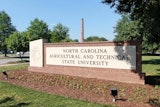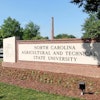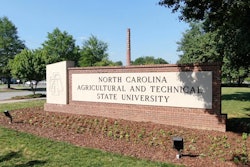Like many, I found the month of January to be a time for reflection and renewal. The month was especially meaningful for advocates of science, technology, engineering, and mathematics (STEM) education with the inauguration of Barack Obama for a second term—a president that has made both scientific and technological innovation, and the preparedness of students for STEM careers, major priorities of his administration.
The STEM agenda, combined with Obama’s goal of increasing Americans’ completion of postsecondary education, has propelled a field of advocates and practitioners—many of whom worked tirelessly on these issues long before now. And despite a political landscape of competing interests and issues, STEM education remains a leading priority across party lines and across the many sectors that support and benefit from a strengthened STEM workforce and greater scientific literacy by all Americans.
Looking ahead to 2013, the STEM education community is riding on several years of high-profile investments and a strong national rhetoric for reform in math and science education, which is why we must place diversity at the center of the STEM education agenda in 2013.
The STEM agenda provides a unique opportunity to advance diversity goals. There are few national—and indeed international—movements that have such a broad base of support and the potential to deeply resonate with individual citizens as well as policymakers from all political persuasions.
The STEM Diversity Rationale
There are a host of rationales for greater diversity in STEM—whether economic, intellectual, local or global.
Perhaps the most salient national rationale—particularly for policy audiences—is that of regional, state and economic gain. From purely a numbers perspective, if we don’t bring our rapidly growing minority communities into the fold, our nation and our scientific industries will fall behind on the very skills needed to advance.
Diverse perspectives in the laboratory are also critical and lead to greater innovation and greater potential to meet today’s most pressing scientific challenges, including those that continue to threaten the health, well-being, and inclusion of underrepresented communities. How can we expect solutions to a multitude of problems facing such a diverse nation and world if we don’t also have diverse backgrounds and perspectives contributing to these solutions?
Finally, over the last year (and earlier), scholarly research and mainstream media alike showcased the importance of postsecondary credentials as a ticket to greater wealth in one’s lifetime, with STEM credentials providing an additional boost given higher wages in these fields. Seeing more underrepresented groups enter STEM majors and graduate with STEM credentials has the collective power to transform whole families and communities.
The Urgency of Now to Diversify STEM
Fortunately, there are a number of opportunities to build upon the rationale for a more diverse STEM workforce in 2013.
The current emphasis on strengthening the ability of two-year colleges to educate more first-time college students is on target with the needs of diverse communities. Two-year schools are the first access point for a large number of college-going minority students, including the majority of Latina/o students. Following on the Department of Education’s 2012 plan for reauthorization of the Carl D. Perkins Career and Technical Education Act, 2013 will also be an important one for career and technical education, a sector for which groups like the National Alliance for Partnerships in Equity are working for the inclusion of a diversity focus.
Advocates should also monitor closely the Obama administration’s new Cross Agency Priority Goal of STEM education, which highlights the need to improve the support of the nation’s Minority Serving Institutions. As readers know, these schools are in a unique position to deliver needed remedial education in math and science and have perhaps the greatest potential to graduate many more minority students in the STEM fields.
This year will also be ripe for conversation on ways to diversify graduate STEM education. We can expect continued action on attempts to lift visa restrictions for foreign STEM graduates and workers, an issue that was put to the legislative test late last year and is a key component of the president’s recent proposed immigration reform plan. While a promising short-term solution, we should not allow such discussion to take shape without simultaneously pressing on the need to diversify our graduate ranks with more women and minorities—a concrete long-term strategy to building talent at home. We must also ensure equity in graduate degree completion for minorities, who take longer to finish than do their White counterparts.
As stakeholders continue to applaud a much needed, focused national dialogue on STEM higher education, we must use this momentum to advantage those groups most underrepresented in these fields. Failure to do so would not only mean lost ground, but lost opportunity.
Dr. Lorelle L. Espinosa, a Senior Analyst at Abt Associates, writes about the national imperative of building and sustaining a diverse STEM pipeline.















